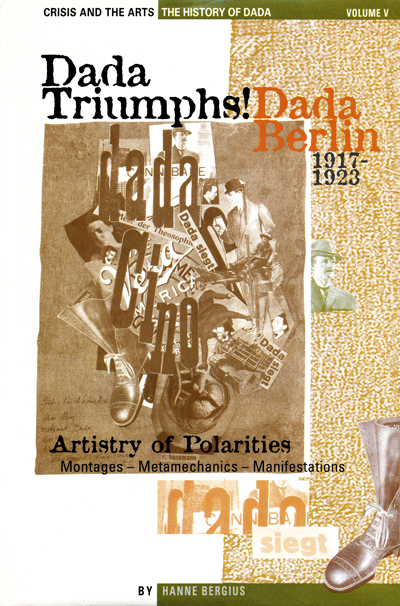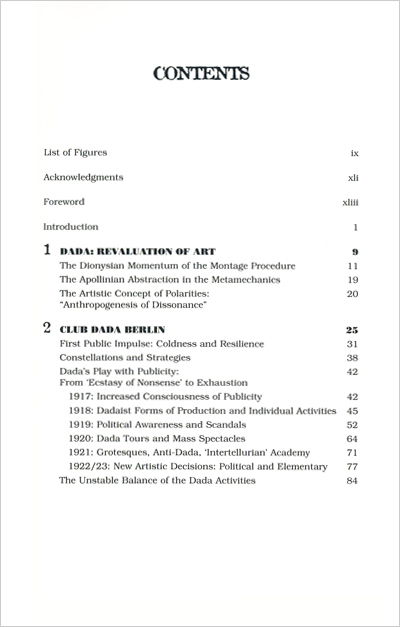
|
Dada Triumphs! Dada Berlin, 1917-1923 Artistry of Polarities. Montages - Metamechanics - Manifestations. Translated by Brigitte Pichon. Vol. V. of the ten editions of Crisis and the Arts. The History of Dada, ed. by Stephen Foster, New Haven, Conn. u. a., Thomson/ Gale 2003. ISBN 978-0-816173-55-6 Eine um die Geschichte von Dada Berlin erweiterte amerikanische Ausgabe von „Montage und Metamechanik...", mit ausführlicher Bibliographie. Klappentext: During World War I, an international group of young artists and writers fled to Zurich, in neutral Switzerland. In reaction to the horror of the war and the onslaught of new technology, as well as to the suffocating aesthetics of futurism and cubism, these artists began to create a new kind of art-art that was anti-logical, anti-aesthetic, anarchistic, confrontational, shocking. Performing and exhibiting at the famous Cabaret Voltaire, these artists called the new art "Dada." Dada soon exploded on the scene in other art capitals of the world: Berlin, Cologne, Hanover, Paris, even New York. Participants in the Dada movement included some of the most influential artists of the twentieth century. Jean Arp, Sophie Taeuber Arp, Hans Richter, George Grosz, Max Ernst, Kurt Schwitters, Hannah Höch, Francis Pica-bia, Man Ray, Raoul Hausmann, Marcel Duchamp, and others alarmed critics, incited outrage, and generally tried to throw into Question every possible preconceived notion about art and life. From the point of view of many scholars, it wasBerlin Dada that most directly engaged and critiquedmodernity and the hierarchies of World War I establishment culture. Rejecting pyramidal concepts of culture in favor of relational and operational "configurations" of culture, Berlin focused on the very facts of culture and culture-making. Perhaps best projected through its photomontage, Berlin's radicalism lay in its recreation of art as an instrument of cultural politics and social revolution. Johannes Baader, Raoul Hausmann, George Grosz, and John Heartfield, among others, radically redescribed the cognitive space of culture, the revolutionary strategies it entailed and the constituting means it both uncovered and deployed. In this volume, Hanne Bergius' careful analysis of Berlin Dada richly textures what must be reckoned one of the most defining moments of early twentieth century cultural history. Erweiterte Druckversion von "Montage und Metamechanik" in englischer Sprache, ca. 300 Seiten ohne Abbildungen: "Dada Triumphs!" als PDF-Auszug |
